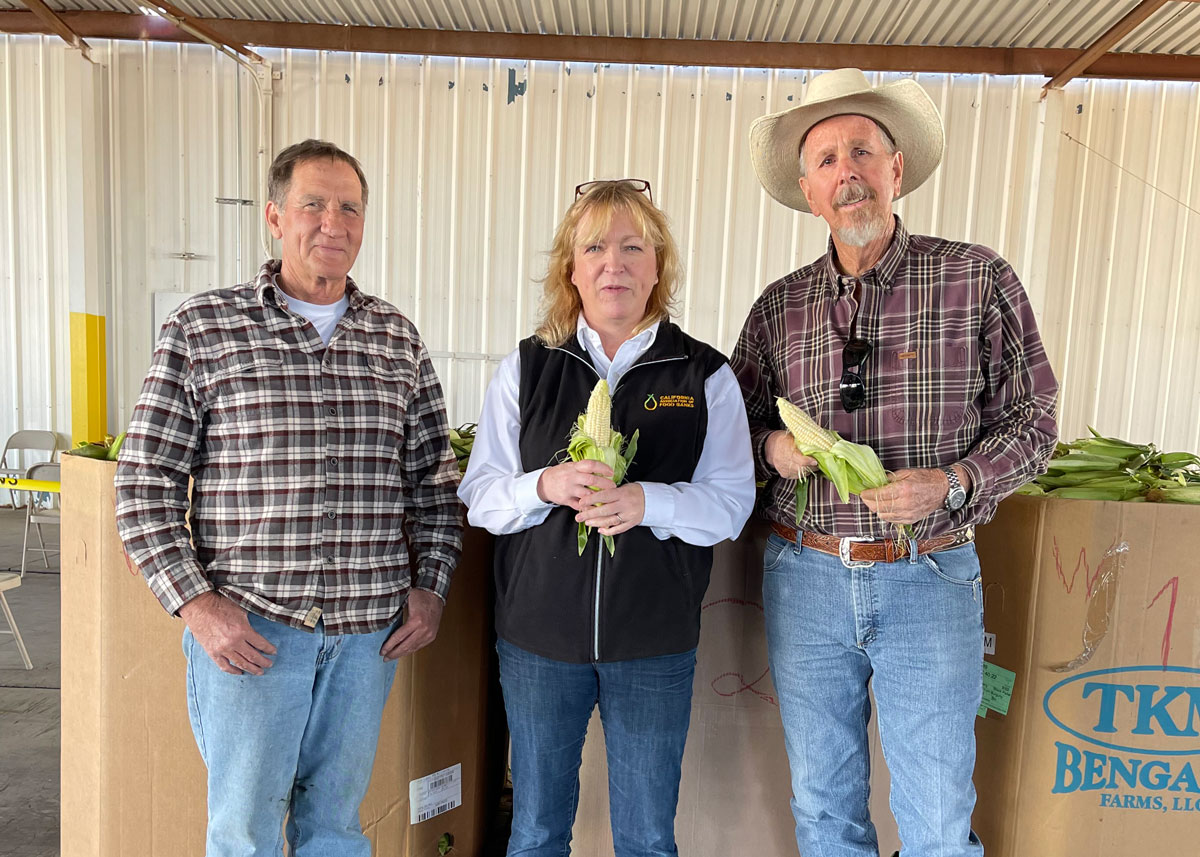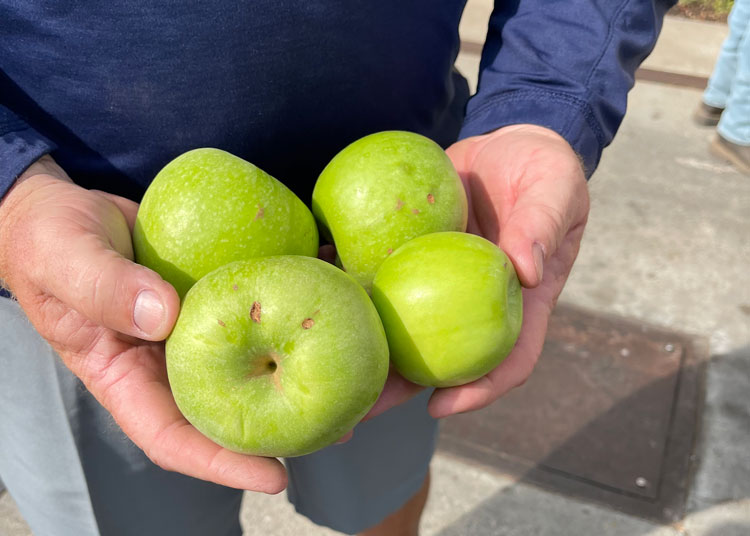From Excess to Access: Feeding San Diego Relies on California Farmers to Secure Fresh Rescued Produce
October is California Farmer & Farmworker Month. Feeding San Diego simply could not distribute the amount of produce it does without vital partnerships with California farmers. Specifically, the relationships built by the California Association of Food Banks’ (CAFB) Farm to Family program.
Grassroots Solutions to Food Rescue
The program originated at the San Francisco Marin Food Bank back in 2005 before being absorbed by CAFB. It secures excess produce from California’s fields and delivers it to food banks throughout the state. It was created by Gary Maxworthy and got its start in quite a grassroots fashion.
“Back then, Gary simply drove to the field and waved down people on tractors,” Maria Hough Houlne, present-day director of Farm to Family, shared with a laugh.
Maria with Steve, a food solicitor, and Doug from Southland Cooling
“Farmers are not desk folks,” added Sabrina Thakkar, associate director of Farm to Family. “They don’t stay at a desk or make calls. Our food solicitors are a very vital part of the program. They are literally our boots on the ground. They make things happen, they make the connections. If there’s excess out there, they know. They share what our vision is – to end hunger in California.”
Everyone Benefits from Farm to Family
Feeding San Diego has been a part of the Farm to Family program since the fall of 2013. Last year, 40% of the food that our organization distributed was fresh produce. Client feedback tells us that fresh produce is high in demand, so we are committed to furthering the accessibility of fresh produce to those we serve through our Produce Pantry program. The program provides fresh produce to anyone in need in hunger hot spots throughout the county. Someone who can speak directly to the importance of the partnership with CAFB to make this program possible is Leticia Rodriguez, sourcing manager at Feeding San Diego.
Easy Sourcing for Hunger-Relief Organizations
“It would be very difficult to distribute the amount of produce that we are currently without it,” she shared. “This partnership allows us to get produce that’s outside our region. Right now, if I were to do cold calling and try to get produce from local donors, I’d have to stay within San Diego County. Because of the partnership with CAFB, we can get produce from San Joaquin Valley and Indio.”
What works out really well for California food banks, including Feeding San Diego, is the fact that CAFB handles the logistics, creating a one-stop shop for both the farmer and the food bank.
“They are automatically getting us our routed produce all year long,” Lety shares. “That helps keep that farm operating. Not every bit of produce is retail ready, so we very much help the farmer keep up with operating expenses and at the same time make sure nothing goes to waste.”
Increased Profits for California Farmers
California farmers also get the satisfaction of knowing their harvest helped feed those in the community who need it, while also being eligible for a 15% tax credit and a “pick and pack” fee to help mitigate harvesting and packaging costs.
There are so many reasons why a farmer might not be able to sell all their produce. Recently, there was a market saturation of strawberries, and consumer demand was low. A huge influx of strawberries came to Feeding San Diego, making the people we serve very happy. With the scale of California produce – over a third of the country’s vegetables and three-quarters of the country’s fruits and nuts are grown in California – when something can’t be sold, it can literally amount to tons of produce.
With CAFB’s Farm to Family program, the excess produce can be shared amongst the state’s food banks. To further support the state’s hunger-relief organizations, CAFB pays export fees to the local food bank whenever they take produce out of a growing region. Before they take product out, they get a refusal from the local food bank first. Sometimes it’s simply too much product, so they can’t take it all.
The Power of Partnerships
The Farm to Family relationship shows the power of partnerships, especially during a time when the climate crisis and the crises caused by the COVID-19 pandemic require everyone to think differently.
“Produce is really tough right now because of the drought. It’s either really expensive or unavailable. There’s not enough produce for all the food banks,” Lety explains. “We definitely want to focus on local first, because we can pick it up and we’re not paying the high transportation fees. With the driver shortage, it really drove up those fees. Local is definitely our first priority. The only thing is that there’s not that much variety. While we’re grateful for our partnership with CAFB and the farmers they work with, our goal is ultimately to work with more local growers, supporting them while at the same time saving money on fuel and lessening the impact on the environment.”
Out in the fields, Maria and Sabrina share that California farmers appreciate the opportunity to give back amidst a challenging business climate. “What I hear most is ‘This is what farmers do. We take care of our neighbors.’ It’s instinctual.”










